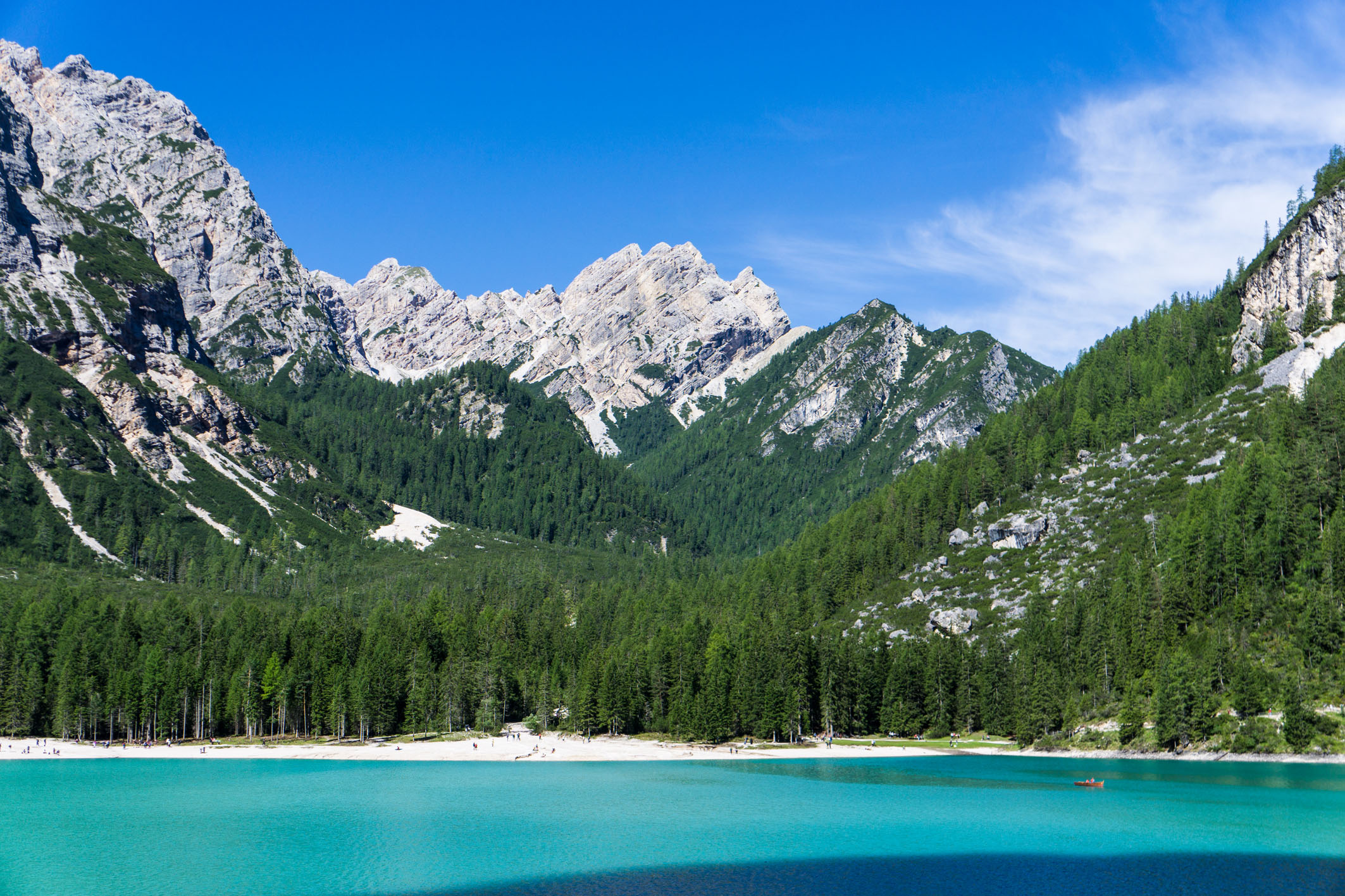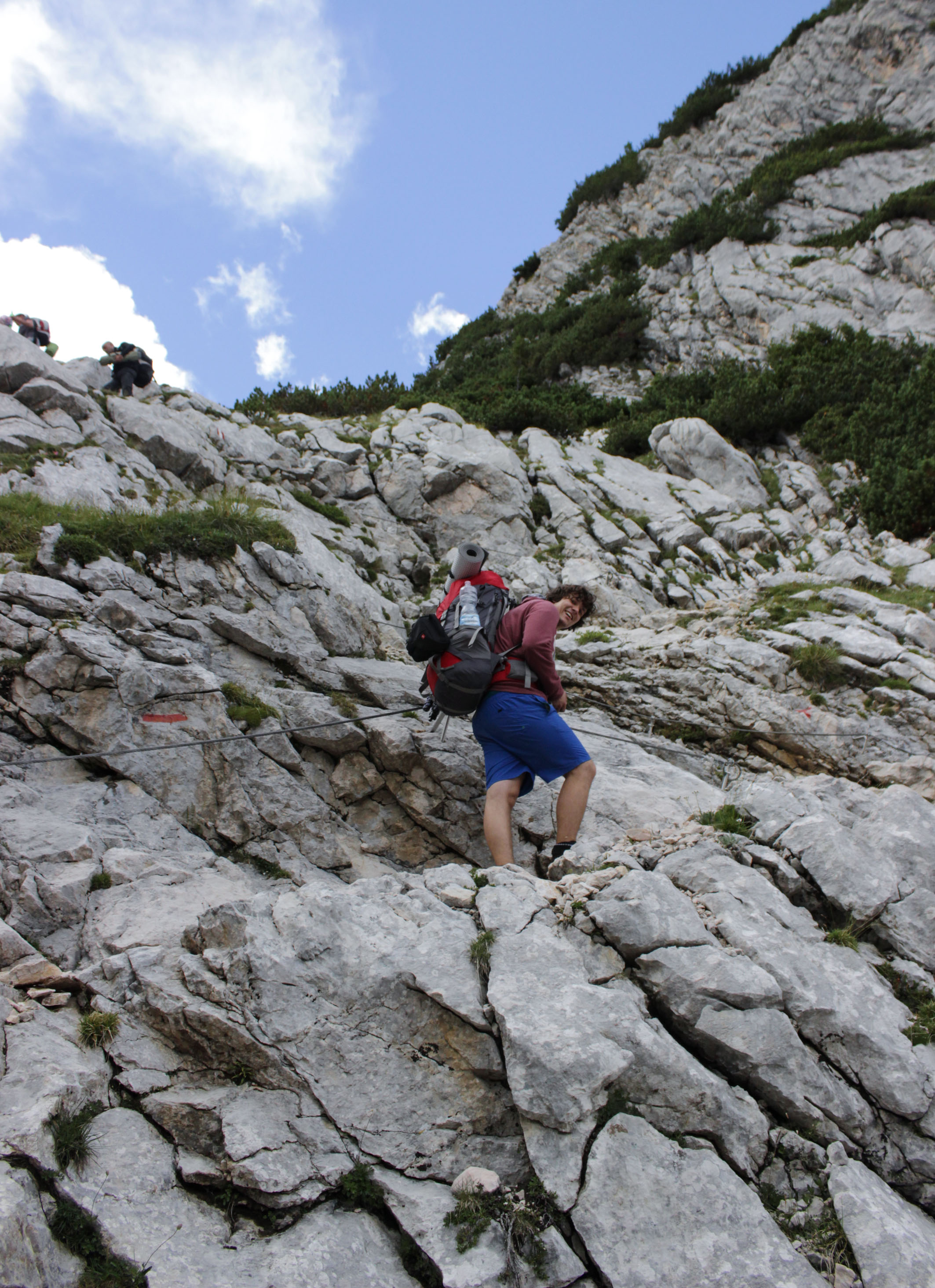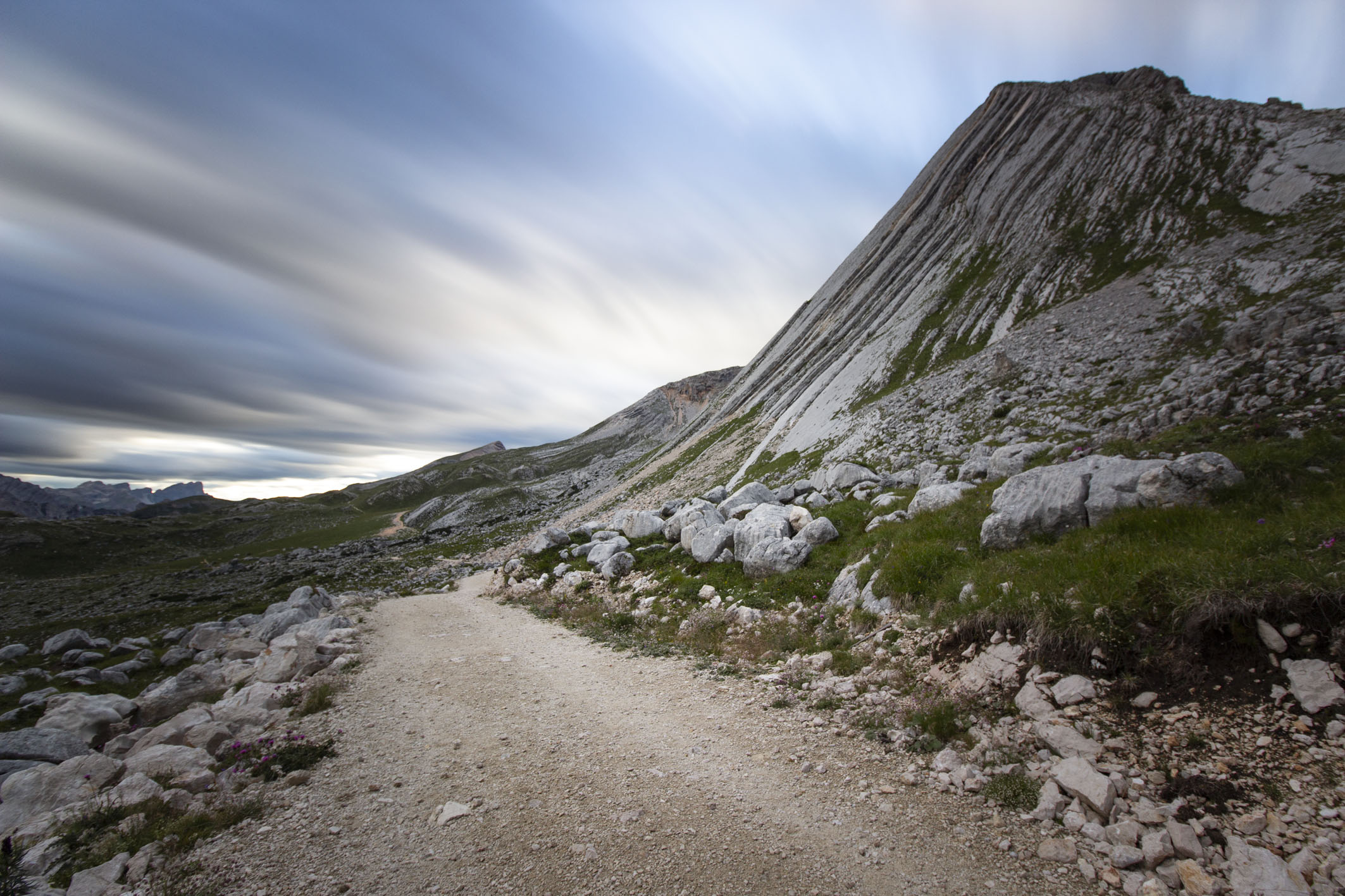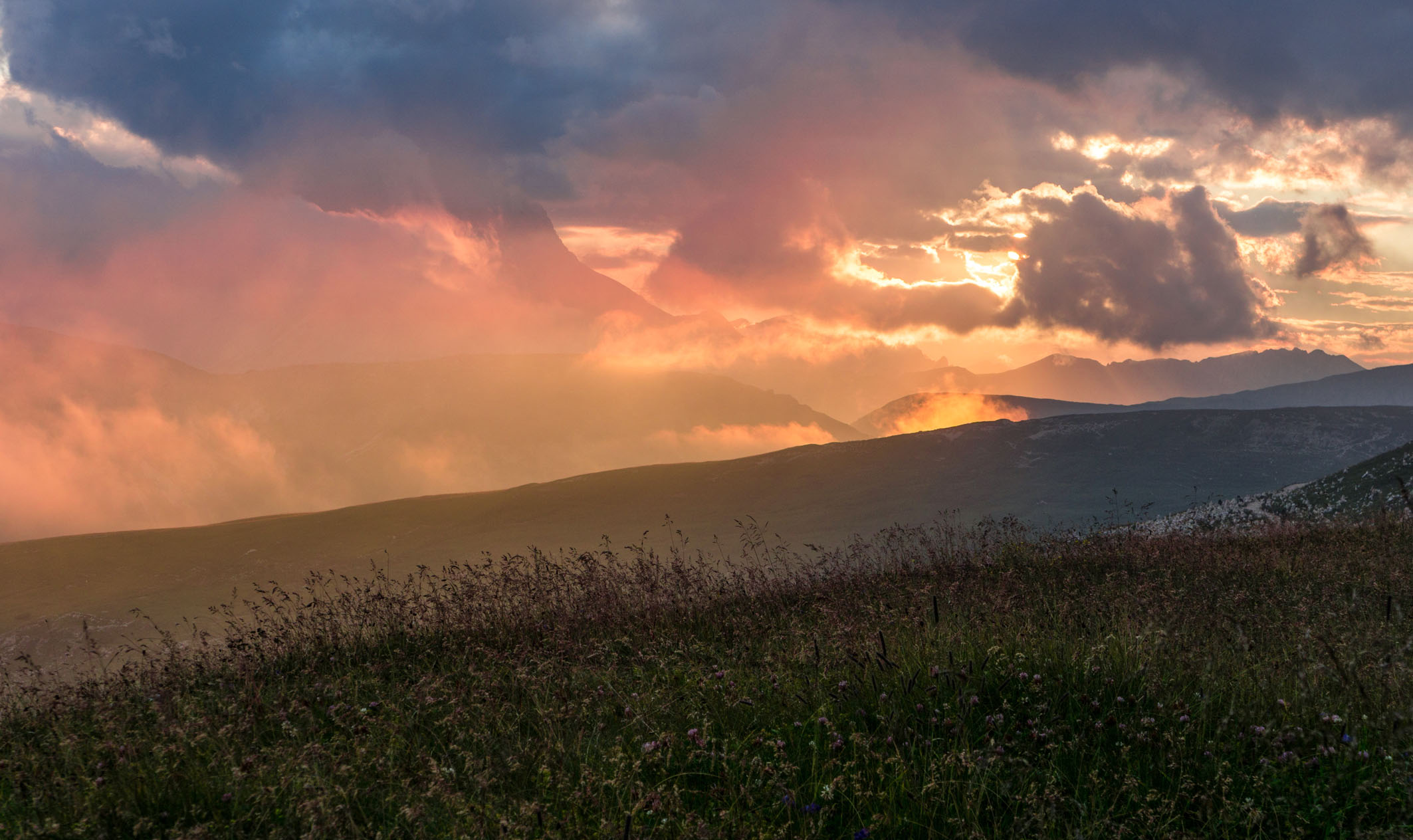



Alex ended the call. The first mountain refuge was already fully booked. We hastily revised the hiking itinerary as our train zoomed past orchards in the Austrian countryside under fine summer light, taking us closer to the trailhead.
Serendipidy would be a key feature of this trip. We had planned to spend a week hiking and photographing Tyrolean mountains, with the first half dedicated to comparatively lesser explored Ötztal Alps and the second half for the famous Dolomites. The improvised itinerary made my first trip to the Alps a remarkable one.
Earlier I had met up with Alex, my friend from Germany in Innsbruck. Church domes dominated the city’s skyline and behind them were towering jagged peaks. In mid summer glacial water rushed through the city while the city’s status as a hub for adventure was shown through bill boards for major outdoor brands.




I had just started exploring photography at the time. Using a humble entry level Canon DSLR paired with the ubiquitous black ribbed lenses, i started to appreciate the joys of photography while exploring a new place.
The plan was to commute using the excellent Austrian public transport system to the ski resort of Vent. This takes us close to the Italian border, where we will then hike up the Niedertalbach Valley and eventually descend on the Italian side near Vernago Lake.
We joked that had we not called Martin-Busch-Hütte, refuges operated by the Alpine Club typically allow you to shelter in some way, even if they are out of beds – and now we can’t just ‘turn up’. In a spontaneous decision, we decided to hike up an adjacent valley from the same trailhead and use mountain huts we had not researched.
Grey tipped peaks grew closer and more passengers departed as we headed higher and closer to the Italian border. Talleitspitze, a pyramid shaped peak divided two steep valleys with our original route on the left and new route following the fast flowing Rofenache River on the right. Wildspitze, Austria’s second highest peak at 3760m is further to the right.
On the trail we were greeted with with the sound of cow bells. The pencil like pines of the valley faded into grassy slopes and finally barren stones and snow, with the occasional waterfall washing down the side. As an Australian, this scenery contrasts with the alps back home which tend to have large rounded tops, a consequence of being an older and geologically less active region.





The lone path snaked up the valley, first following the course of the Rofenach and then gradually ascending the right hand slope at a steeper gradient. We arrived at Hochjoch Hozpiz, the ‘backup’ hut with only a little daylight remaining. Mountain huts in Austria have a wonderful tradition in my view. The costs are generally reasonable, and there is the option to enjoy a sumptuous pasta, a glass of house beer and even a generous slice of cake topped with cream after an exhausting day.
After picking bunks, we joined a long table in the common room.
‘So where are you young men heading to tomorrow?’, asked a man from across the table, his lean physique and grey stubby beard conveying the look of a seasoned mountaineer.
‘Onto the Austrian side, slowly’, I replied
‘You will enjoy the view of the glaciers. We came from that way. You do not look local, where are you from?’
Disclosing you’re from Australia tended to draw either crude jokes or inspiring travel stories.
‘I really enjoyed visiting ‘Mel-born’ and Adelaide many years ago. I also took that long train into the red desert. The glow of sunset was gorgeous - it was like nothing i had seen before.’
‘In any case – you’re a long way away. I’m from Slovenia and if you get a chance, the mountains there are beautiful too. Not as high but very nice.’
Under the dimly lit lamps the low hum of conversations continued – some groups playing cards, other discussing tomorrow’s route over a hot drink. The as the time neared 10pm, in almost an unspoken way everyone got up and went to rest, and the lights swtiched off soon after.


Soon the refuge which had for so long sat far uphill blended into the mountain below us. Bare vegetation faded into scree and only tiny flowers emerged in a landscape now dominated by a large glacier on our left. We gradually made our way up to a high saddle. The cool mountain air made a nice contrast to the humidity and heat in previous cities.
Being fairly new to photography at the time, I had not experimented with long exposures prior. Doing so in the middle of a summer day required a 10 stop ND filter, the lowest ISO my camera was capable of and stopping the lens down to f22, and sometimes that was still not enough to capture streaky clouds. When it came to macro, while I know the relationship between depth of field and aperture, the constant breeze made it difficult even with the best natural light possible. Nevertheless, the endless days left me immersed.



Spontaneous route picking led us to stay at Bella Vista hut the next night, a non-Alpine Club hut with far more creature comforts like saunas, but also a steep price tag (particularly for us students at the time). Whereas Alpine club huts were rustic and communal in feel, Bella Vista hut was more formal and prestigious. The dining room felt more akin to a distinguished restaurant. One lasting memory from Bella Vista hut was the most breathtaking valley view of rising and receding mist when using the bathroom.
This area of the Alps is known for its natural beauty as well as harsh climate. In 1991, two German hikers discovered the body of what they thought was a deceased mountaineer on an adjacent mountain pass. The body and its belongings had been near perfectly preserved by the cold and dry environment at an altitude of 3200m. Its wide bear skin shoes, a meticulous crafted copper axe, a quiver of arrows and a birch basket with berries and dried fungus showed the life for a 5000-year-old Chalcolithic man.
The mummy was later named Ötzi, after the name of this mountain range. Much of Ötzi’s life is still shrouded in mystery. He had over 60 tattoos and his belongings suggested some form of status. A deep wound was also found near his chest. He may have been trying to run from attackers or been the victim of a ritual sacrifice. The mountains were his lonely resting place.
It seemed inevitable that the weather would eventually turn bad for us too. On our day to descend onto the Italian side, we were drenched in a constant shower and thick fog. At times the visibility was barely ten metres and the steep stony path tested our concentration. Luckily the fog cleared away somewhat as we descended. In the distance, in poor light, we saw two ibex, hardy residents of this terrain battling it out for mating rights. Slowly the path cut across a gully and turned sharply closer to the ibex flock, and a tiny gap in the sky opened up to let in a splash of brilliant light.


We resupplied food and replaced broken equipment on the Italian side, visited Decathlon (which Alex called the ‘Church of mountaineering’), before catching an exceptionally slow evening train to within 12 km of the famous Braies Lake in the Dolomites. We walked the remainder. The air carried a faint earthy scent as the road wound deep into the forest under a brilliant night sky. We were here to try astrophotography, attempting to capture the reflections of the Milky way against the famous limestone mountains and lake.
A century ago, similar roads paved the way to the early days of Tyrolean tourism. Built at the end of the 19th century by an early hotelier, the lodge on the shores of the Braies Lake hosted many aristocratic guests like the heir to the Austrian-Hungarian throne, archduke Franz Ferdinand. After the echoes of empires faded, the hotel also marked the first steps of freedom for 139 important hostages held by the SS in the dying days of WWII after a tense standoff in the nearby town. The hostages included Russian generals and families of high ranking German officers who had fallen out of favour in the Nazi regime and were held for possible negotiations. Today the hotel is again a place to experience tranquility and relax.
A small wooden boat rocked gently under the glow of the distant galaxies. We spent most of the night photographing the stars. Being relatively new to astrophotography, I struggled with many simple pitfalls like not managing to find the exact true infinity focus of a lens in the darkness, and also attempting a very long exposure which caused a strange type of noise in the RAW file which I later learnt was related to overheating. Alex, who was far more experienced in astrophotography had more success.

During the day we ascended the limestone mountains featured in the night scene, which at a marginally lower altitude compared to the previous leg in the Ötztal Alps, made the home for many wildflowers. The lack of sleep, and carrying heavy packs made this day exhausting.
The skies were not all clear but moving clouds naturally provided a good place to experiment with a 10 stop ND filter. The results were not the most stunning but satisfied my curiosity. I think there is a part of us that likes to create. The ability to experiment with settings and occasionally get sensible results is what makes a hobby like photography rewarding. I also think of how so much technological advancements were packed into a lowly consumer DSLR, and how sharp, contrasty images can be had with even basic lenses.






A prior landslide on the planned route ‘forced’ us to make another spontaneous decision, this time taking an easy day in the sleepy village of Dobbiaco in the valley below and staying at the former railway hotel turned hostel.
Wandering into town centre, several rows of long table had formed in the small square and notes of caramel and pancakes drew us in. Many sat mingling over a glass of beer and a paper plate of smoked meats and relish. Small lights embellished two stalls, the one attracting us sold freshly made strauben, a freshly made funnelcake with generous helpings of raspberry jam and powdered sugar. It felt like we had earned the reward after many previous misadventures. The part Alex most looked forward to, the famous ‘three peaks’ (Tre Cime di Lavaredo in Italian) was yet to come. As the sun set behind the jagged peaks, lamps twinkled and lit up the former hotel as a cool mist descended on the valley.



The ascent to the famous peaks was comparatively easy thanks to our additional ‘rest day’. The path climbed up through switchbacks and emerged in a alpine meadow dotted with many small lakes. Rifugio Lavaredo is probably the most famous hut in the Dolomites and getting a bed was the ultimate challenge – if we managed, we were now ‘even’ on luck after the disappointment on the first day. Arriving early helped our wish come true. Looking closely, one corner of the roof has soot. There is a BBQ and smoker there to further the already amazing mountain hospitality.
That evening we climbed only a small distance. That sunset was a special one as we watched the clouds streak and the tones on the three towers intensify in colour.


What these limestone landscapes lack in altitude compared to the more famous Swiss Alps is made up by a fair share of amazing stories. During WWI, a little known battle was fought in this region between the Italian and Austrian sides. Both dug crude tunnels in the softer rocks to prepare for an extended battle. Many carried ammunition and supplies over Via Ferratas (literally iron ways) and sheltered in the damp tunnels while blizzard tore through outside. Many didn’t make it. Today, many Via Ferratas have been repurposed for adventurers to traverse what would otherwise be difficult paths. A more famous section of these tunnels lay in Lagazuoi as an open air museum which I heard was worth a visit.
We did not have ferrata kits so explored a small number of tunnels. In the plains below, small lakes dotted the plain and Alex found a resident of the mountains.




It was difficult not to reflect on the breadth of human experiences linked to places we had visited. The ice man’s perilous final days on the mountains, long summer evenings spent by royalty entertaining guests at a mountain lake before the end of the great empires, and futile battles fought from the dingy tunnels in what is now considered a place of great beauty. Beneath the majestic peaks, a sea of grassy stalks twist and swirl in the mountain wind as hikers return to the warmth of the dining quarters.
Many great memories were captured using fairly unsophisticated cameras. Not all were successful, but the seemingly endless days to explore, great Tyrolean hospitality and serendipity made this trip a treasured memory.
